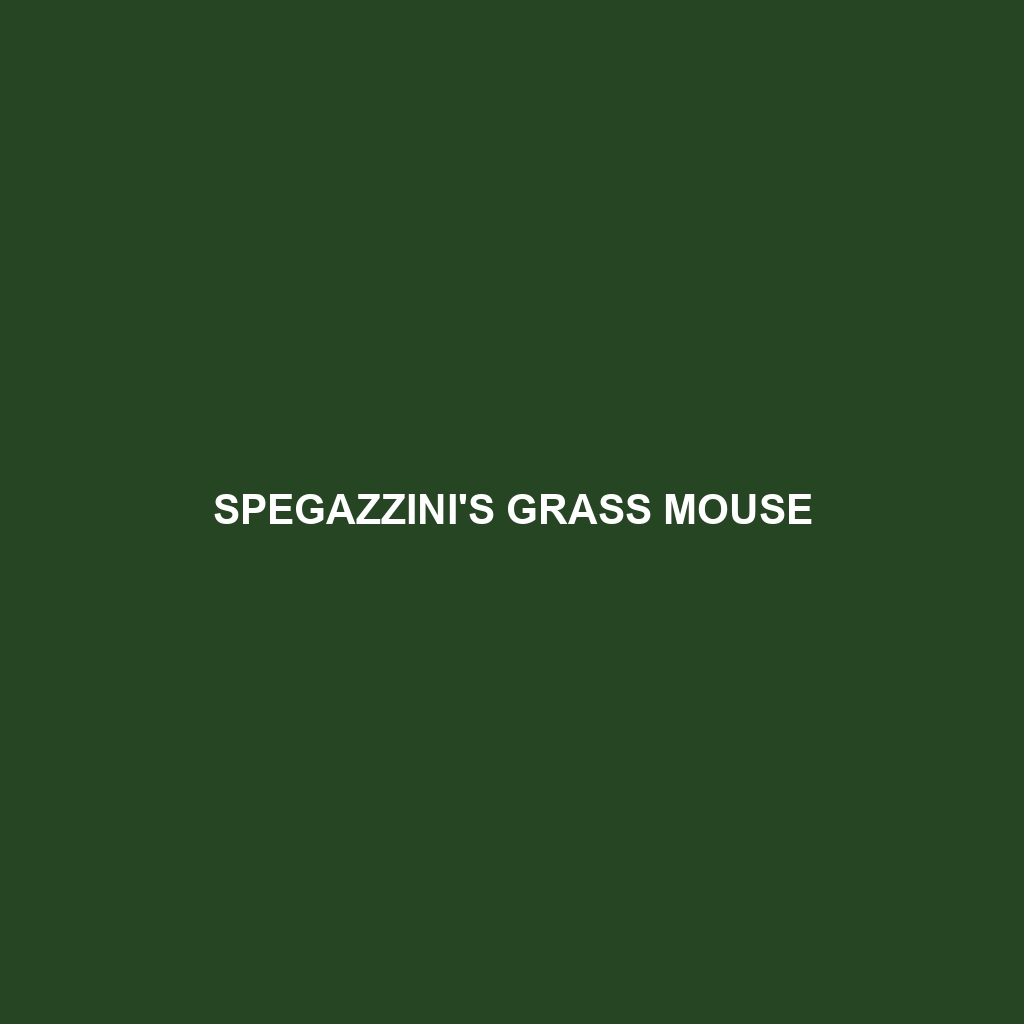Spegazzini’s Grass Mouse
Common Name: Spegazzini’s Grass Mouse
Scientific Name: Akodon spegazzinii
Habitat
Spegazzini’s Grass Mouse is primarily found in the temperate grasslands and open woodlands of South America, specifically in regions such as Argentina, Uruguay, and parts of southern Brazil. This species thrives in areas with dense herbaceous vegetation, often near water sources, which provide both shelter and food resources. The mouse is particularly adapted to grassland ecosystems where its burrowing habits allow it to navigate through the soil effectively.
Physical Characteristics
This small rodent typically measures between 8 to 12 centimeters in body length, with an additional tail that can reach up to 7 centimeters. Spegazzini’s Grass Mouse features a slender body covered in soft fur, ranging in color from light brown to gray, facilitating camouflage within its grassy habitat. Distinctive features include rounded ears and a pointed snout, allowing for keen sensory perception. Its fur is often mottled, helping it to blend seamlessly into its environment.
Behavior
Spegazzini’s Grass Mouse exhibits a range of behaviors typical of small rodents. It is primarily nocturnal, foraging for food at night and retreating into its burrow to evade predators during the day. Socially, these mice can be solitary or live in small family groups, engaging in territorial marking and vocal communication. Their active digging and nesting behaviors contribute to soil aeration and plant dispersal within their habitat.
Diet
The diet of Spegazzini’s Grass Mouse predominantly consists of seeds, fruits, grasses, and roots. This granivorous rodent plays a significant role in its ecosystem by aiding in seed dispersal and plant regeneration. Periods of drought may lead the species to adapt by scavenging for available food sources, showcasing its resilience and ability to survive in varying environmental conditions.
Reproduction
Breeding season for Spegazzini’s Grass Mouse typically occurs from late spring to early autumn, coinciding with warmer weather and abundant food availability. Females often produce two to three litters per year, with each litter containing approximately three to five offspring. The young are born blind and hairless, relying on their mother for nourishment and protection until they mature and leave the nest around four weeks of age.
Conservation Status
Currently, Spegazzini’s Grass Mouse is classified as vulnerable due to habitat loss from agricultural expansion and urban development. Conservation efforts are essential to protect the remaining populations and their natural habitats, which are crucial for their survival.
Interesting Facts
One fascinating aspect of Spegazzini’s Grass Mouse is its ability to escape predators by utilizing complex burrow systems. These intricate tunnels not only provide shelter but also serve as a refuge during foraging expeditions. Additionally, this species has been shown to exhibit playful behavior, engaging in social interactions that can appear quite remarkable for small rodents.
Role in Ecosystem
Spegazzini’s Grass Mouse plays a vital role in its ecosystem as both a herbivore and prey species. By aiding in seed dispersal, it contributes to plant diversity and sustains the health of grassland habitats. Moreover, as prey, it supports various predators, including birds of prey and small carnivores, thereby maintaining ecological balance. Its burrowing activities also enhance soil quality, which benefits the overall environment.
